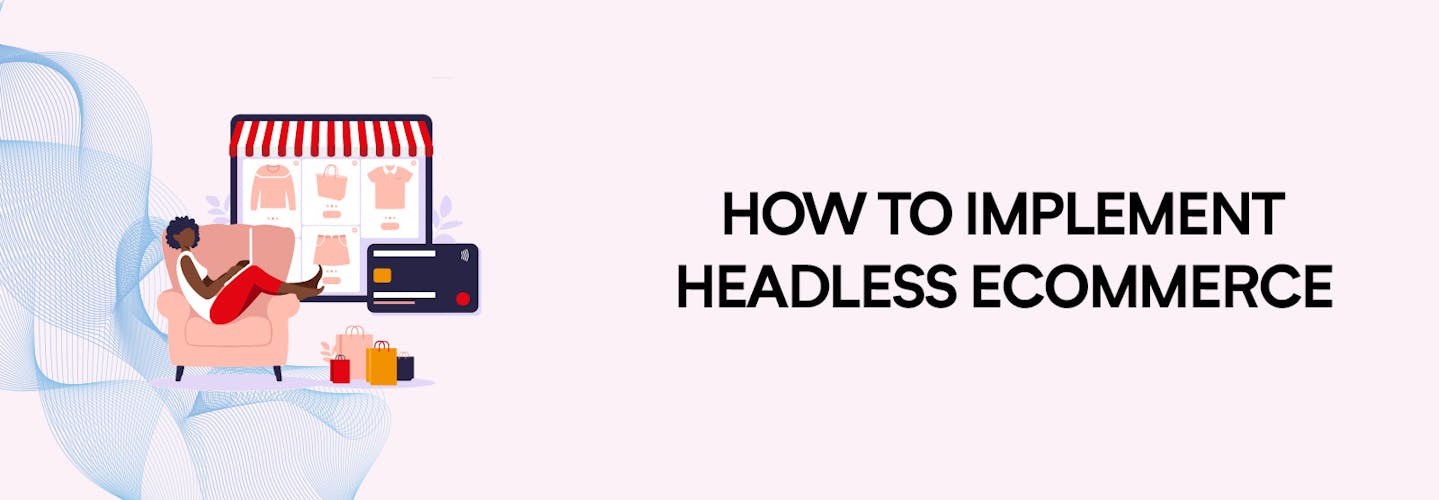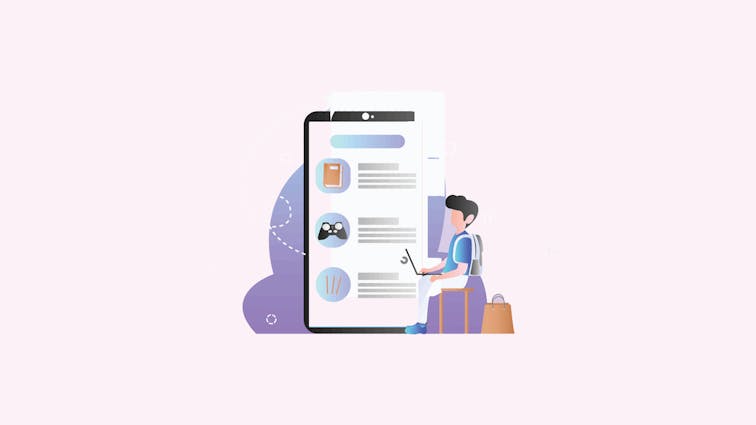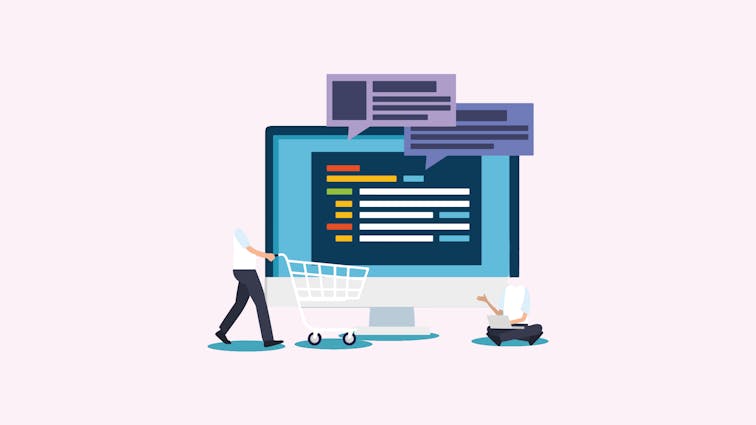
How Can You Implement Headless ecommerce - aasaan
Did you know that the world of commerce is losing its head? Well, not literally.
We’re talking about headless commerce, a revolutionary approach to online business that’s changing the game for retailers worldwide.
According to Statista, retail e-commerce sales amounted to approximately 5.2 trillion U.S. dollars worldwide in 2021.
This figure is forecast to grow by 56 percent over the next years, reaching about 8.1 trillion dollars by 2026.
So, are you ready to lose your head in the world of commerce? Because the future of e-commerce is here, and it’s headless.
What is Headless implementation?
Headless implementation refers to a design approach where the front-end presentation layer of a website is decoupled from the back-end data and business logic.
This separation allows developers to work on the front-end and back-end independently, providing greater flexibility and control over the user experience.
How does Headless eCommerce work?

In a headless ecommerce setup, the front-end and back-end are separated and communicate through APIs.
The front-end, often built with modern JavaScript frameworks, fetches data from the back-end through these APIs.
This allows for a more flexible and customizable user interface, as changes to the back-end do not directly affect the front-end.
Core Technologies and Frameworks for Headless Ecommerce
A. Content Management Systems (CMS)
A CMS is a software that allows you to create, manage, and modify content on your website without needing specialized technical knowledge.
In a headless ecommerce setup, a headless CMS is used, which only provides the back-end capabilities, allowing you to manage content that is then delivered to any front-end through APIs.
B. Application Programming Interfaces (APIs)
APIs are the bridge between the front-end and back-end in a headless ecommerce setup.
They allow the front-end to fetch data from the back-end and display it to the user.
APIs provide a standardized way for different software components to communicate, making them a crucial part of headless ecommerce.
C. Frontend Frameworks
Frontend frameworks are tools that help developers build the user interface of a website.
In a headless ecommerce setup, developers can choose any frontend framework they prefer, as the front-end is decoupled from the back-end.
This allows for greater flexibility and customization in designing the user interface.
D. Backend Systems
The backend systems in a headless ecommerce setup handle the business logic and data management.
They interact with the front-end through APIs, providing data and functionality as needed.
The backend systems can include the CMS, databases, and other server-side components.
Implementing Headless Ecommerce: Step-by-Step Guide

1. Defining Your Ecommerce Goals
Before diving into the world of headless ecommerce, it’s crucial to have a clear understanding of your goals.
What do you want to achieve with your ecommerce platform? Are you aiming for increased sales, improved customer experience, or perhaps a more streamlined operation?
Having clear goals will guide your decisions as you navigate through the process of implementing headless ecommerce.
2: Choosing the Right Ecommerce Platform
The next step is to choose the right ecommerce platform. This is a critical decision as it will form the backbone of your online store.
There are many platforms available, each with its own strengths and weaknesses.
Consider factors such as scalability, flexibility, and cost when making your choice.
Remember, the right platform for you is one that aligns with your ecommerce goals.
3: Selecting a Content Management System (CMS)
A Content Management System (CMS) is a tool that helps you create, manage, and modify content on your website without needing to interact directly with the code.
When selecting a CMS, consider its ease of use, flexibility, and compatibility with your chosen ecommerce platform.
The right CMS will make managing your online store a breeze.
4: Setting Up API Integration
API integration is a key component of headless ecommerce.
It allows your ecommerce platform and CMS to communicate with each other, ensuring a seamless operation.
Setting up API integration may require some technical expertise, so don’t hesitate to seek help if needed.
Once set up, API integration will allow you to manage your store more efficiently.
5: Designing and Developing the Front-End
The front-end of your website is what your customers see and interact with.
It’s important to design and develop a front-end that is visually appealing, easy to navigate, and responsive.
Remember, a well-designed front-end can significantly enhance the user experience and boost sales.
6: Implementing Backend Functionality
The backend of your website is where all the magic happens. It’s where orders are processed, customer data is stored, and inventory is managed.
Implementing backend functionality involves setting up databases, servers, and applications that power your online store.
It’s a complex process, but crucial for the smooth operation of your ecommerce platform.
7: Integrating Payment Gateways and Shipping Providers
To run a successful online store, you need to integrate reliable payment gateways and shipping providers.
This ensures that your customers can make secure payments and receive their orders in a timely manner.
Research different providers, consider their fees and reliability, and choose the ones that best suit your needs.
8: Testing and Optimizing
Finally, before launching your online store, it’s important to test and optimize it.
This involves checking for any bugs or issues, ensuring that all features work as expected, and making any necessary improvements.
Remember, optimization is an ongoing process. Always be on the lookout for ways to improve your store and enhance the customer experience.
Implementing headless ecommerce may seem daunting, but with a clear plan and the right tools, it’s a journey well worth embarking on. So, are you ready to take the plunge?
Challenges of Implementing Headless Ecommerce
While headless ecommerce offers numerous benefits, it’s important to be aware of the challenges involved:

1. Technical Complexity
Implementing headless ecommerce requires expertise in multiple technologies and integration points.
It may require additional resources and specialized skills to set up and maintain the front-end and back-end systems effectively.
2. Increased Development Time and Cost
Decoupling the front-end and back-end adds complexity to the development process, potentially leading to increased development time and cost.
Planning, coordination, and thorough testing are crucial to mitigate these challenges.
3. Scalability and Maintenance
As the complexity of the system increases, ensuring scalability and seamless maintenance becomes crucial.
Regular updates, security patches, and performance optimizations are essential to keep the system running smoothly.
Get Started With Headless E-Commerce With Aasaan
Aasaan is a headless store builder and API-first commerce platform that allows you to visually build next-generation shopping experiences, all without code.
With Aasaan, you can enjoy benefits such as:
- Lightning-Fast Site Speed: Experience a 70% increase in site speed, ensuring a seamless shopping experience for your customers.
- Boosted Conversion Rates: Witness a remarkable 38% uplift in conversion rates, maximizing your sales potential.
- Elevated Average Order Value: Enjoy a 20% surge in average order value, driving higher revenue per transaction.
- Accelerated Time to Market: Achieve 10x faster time to market, enabling you to stay ahead of the competition.
Aasaan seamlessly integrates with your existing backend or you can start with our API-first commerce platform and harness the power of best-in-class technology within seconds.
You can manage all aspects of your business from a single admin app, making it easy to streamline your operations and stay on top of your business.
So, are you ready to transform your ecommerce business with Aasaan? Visit aasaan.app to get started today!
For more insight into how aasaan can fit into your workflows, go ahead and schedule a demo!
Want to learn more about headless commerce?
Explore our expertly crafted guide to headless commerce, offering a complete introduction, comprehensive overview, and valuable insights.
Dive into the world of headless commerce and unlock its countless benefits for your company.
FAQs:
1. What is the difference between headless ecommerce and traditional ecommerce?
In traditional ecommerce, the front-end and back-end are tightly coupled, meaning that the visual elements and commerce functionality are closely tied to the underlying platform. In headless ecommerce, the front-end and back-end are decoupled, allowing businesses to deliver content and commerce experiences independently, using APIs to communicate between the two layers.
2. Can I migrate my existing ecommerce store to a headless architecture?
Yes, it is possible to migrate an existing ecommerce store to a headless architecture. However, it requires careful planning and execution. Assess the compatibility of your current platform, evaluate the potential benefits of going headless, and consider the impact on your existing integrations and workflows.
3. Do I need technical expertise to implement headless ecommerce?
Implementing headless ecommerce does require technical expertise, especially in front-end development, back-end integration, and API management. Collaborating with a skilled development team or partnering with an experienced agency can help ensure a smooth implementation process.
4. How does headless ecommerce impact SEO?
Headless ecommerce can have a positive impact on SEO if implemented correctly. With the flexibility to customize the front-end and optimize content delivery, businesses can create SEO-friendly experiences. However, it’s important to ensure that the necessary SEO elements, such as metadata, structured data, and URL structures, are properly implemented.
5. Is headless ecommerce suitable for small businesses?
Headless ecommerce can benefit businesses of all sizes, including small businesses. It offers flexibility, scalability, and customization possibilities that can help small businesses create unique and engaging experiences for their customers. However, it’s important to assess the specific needs and resources of the business before deciding to implement headless architecture.








